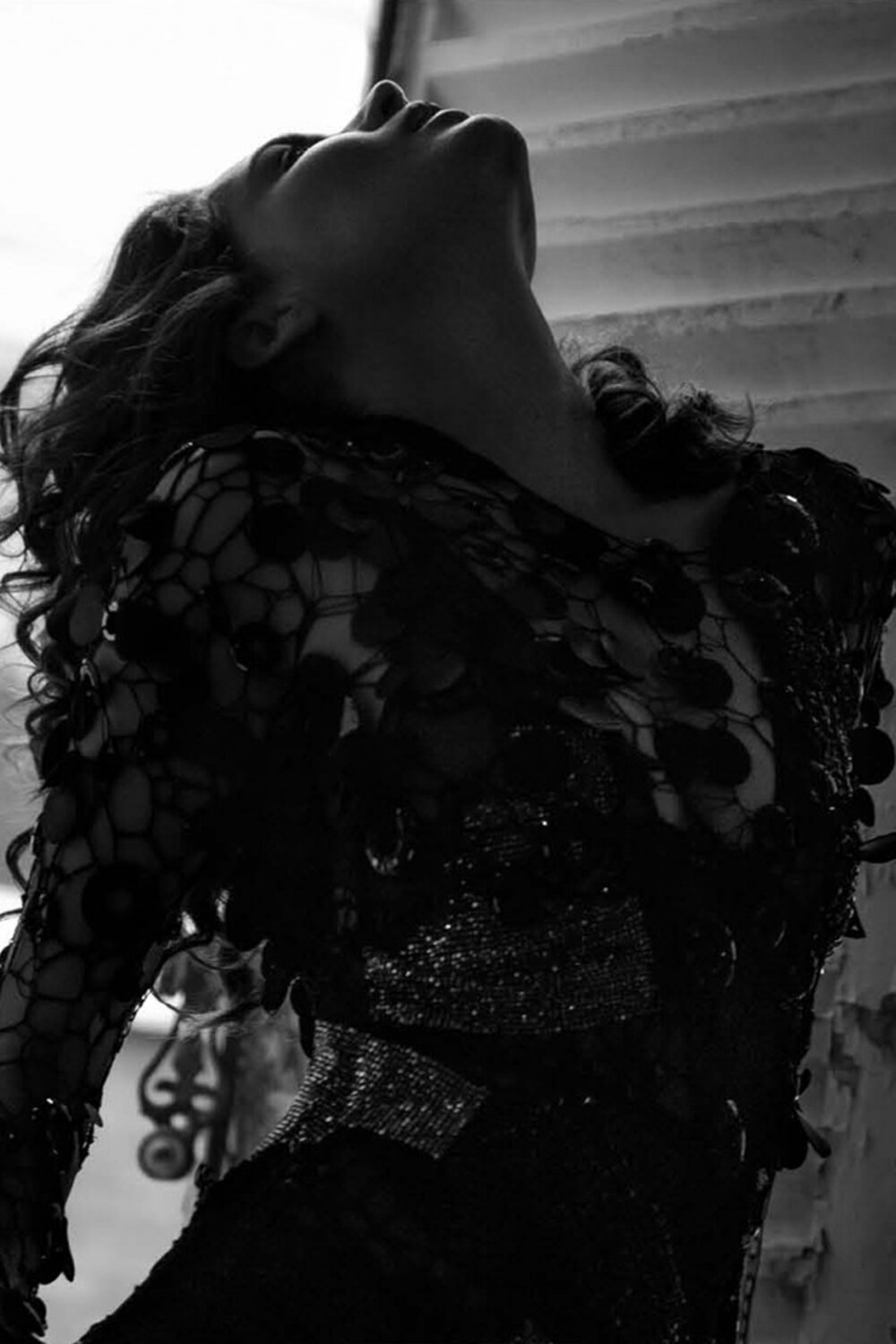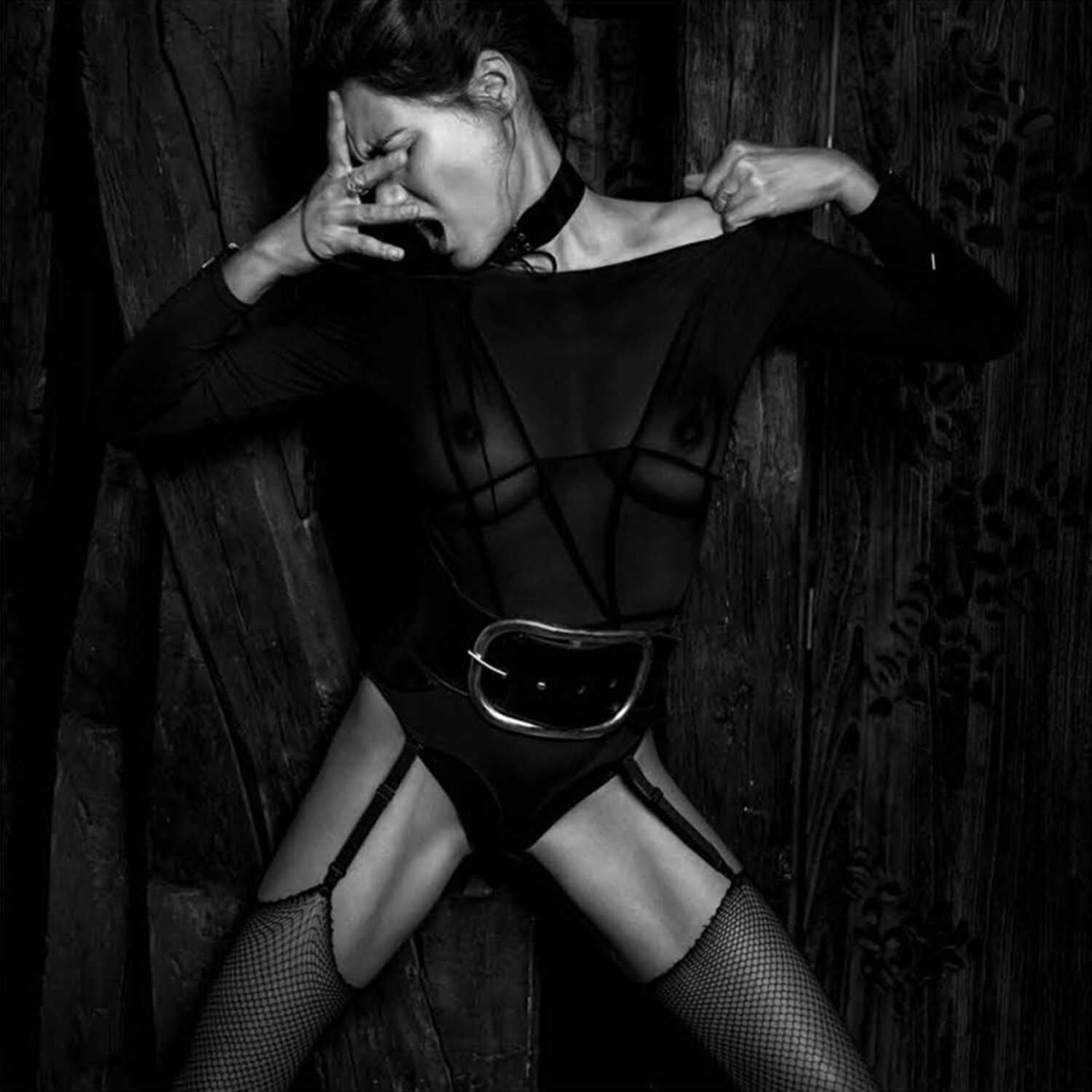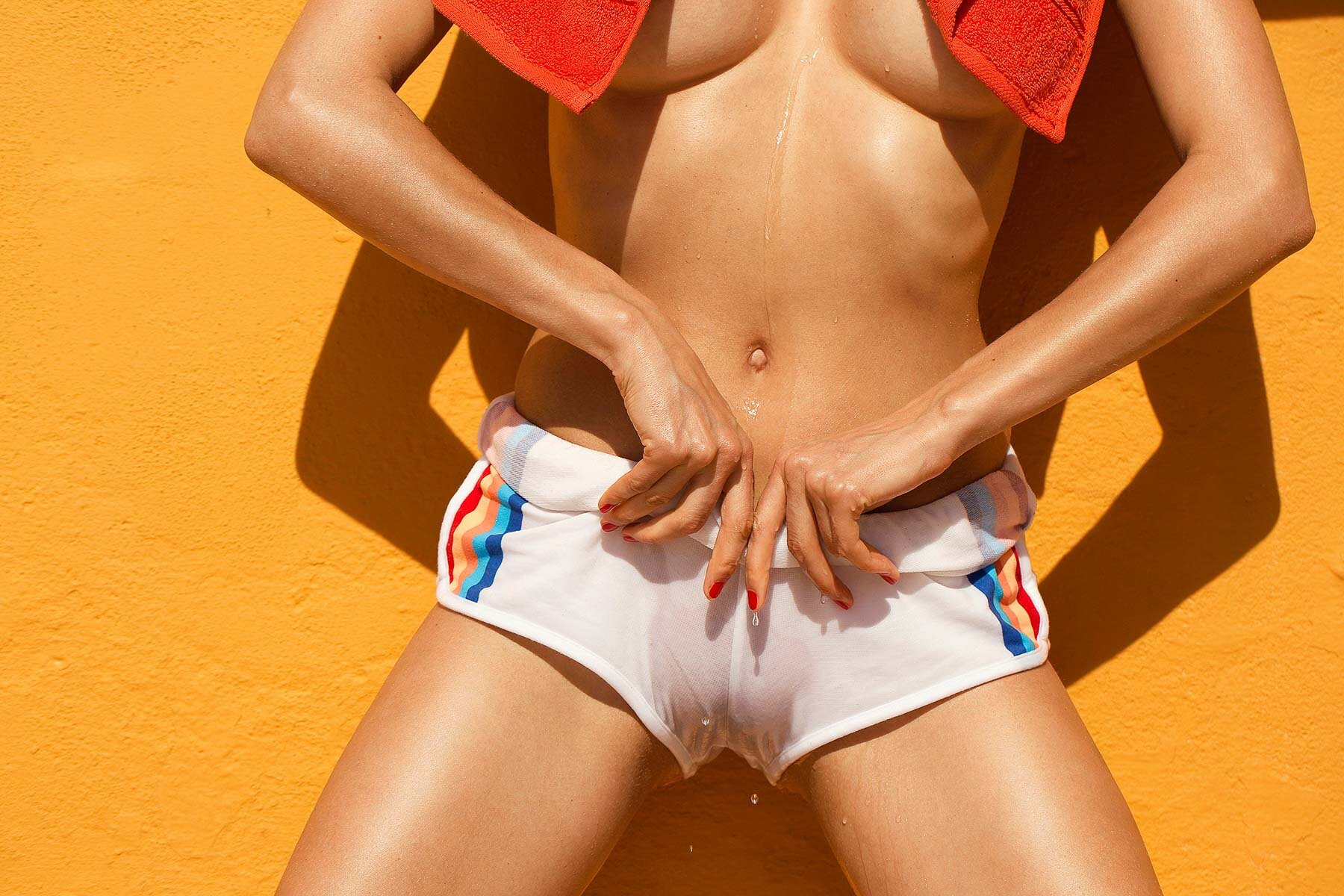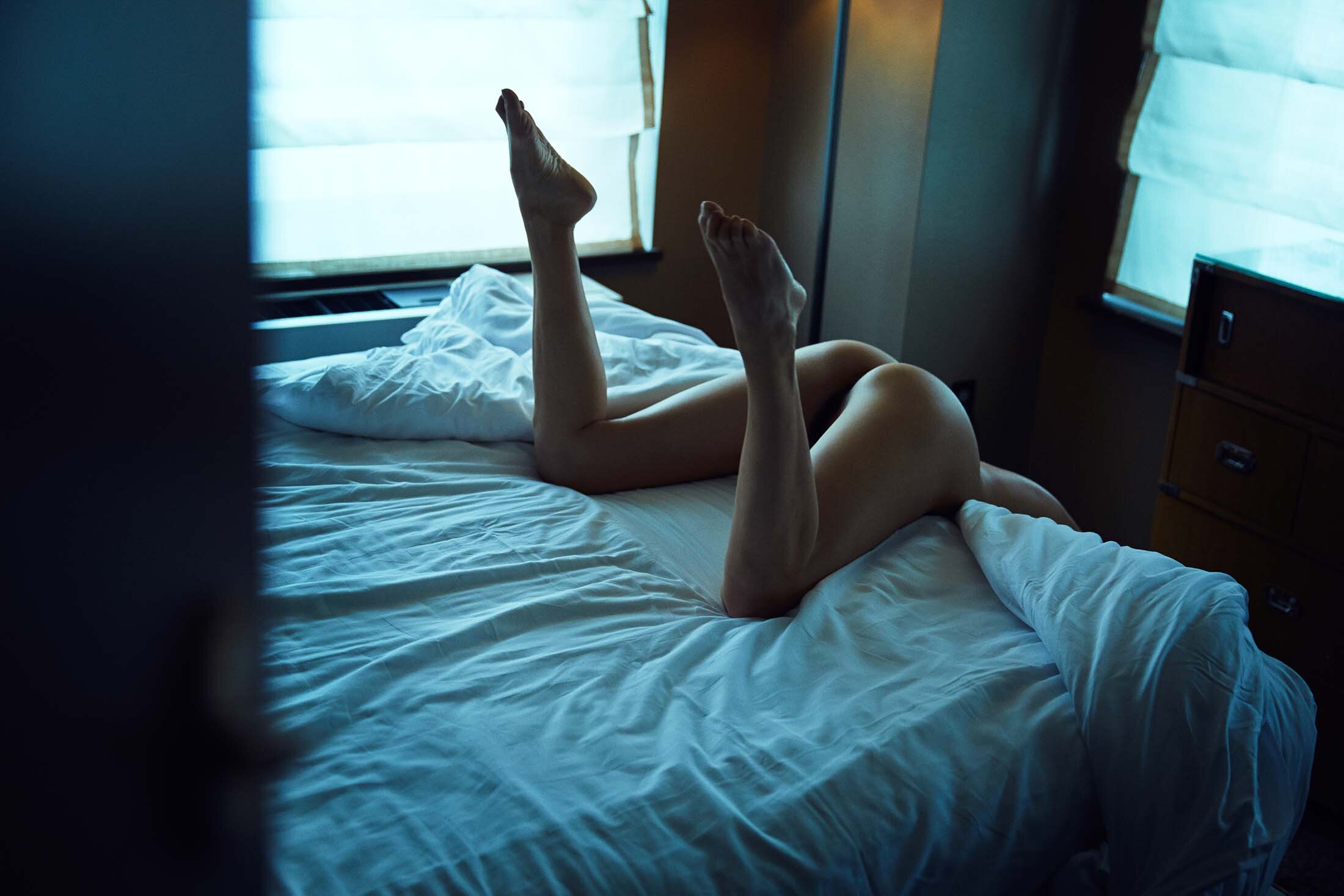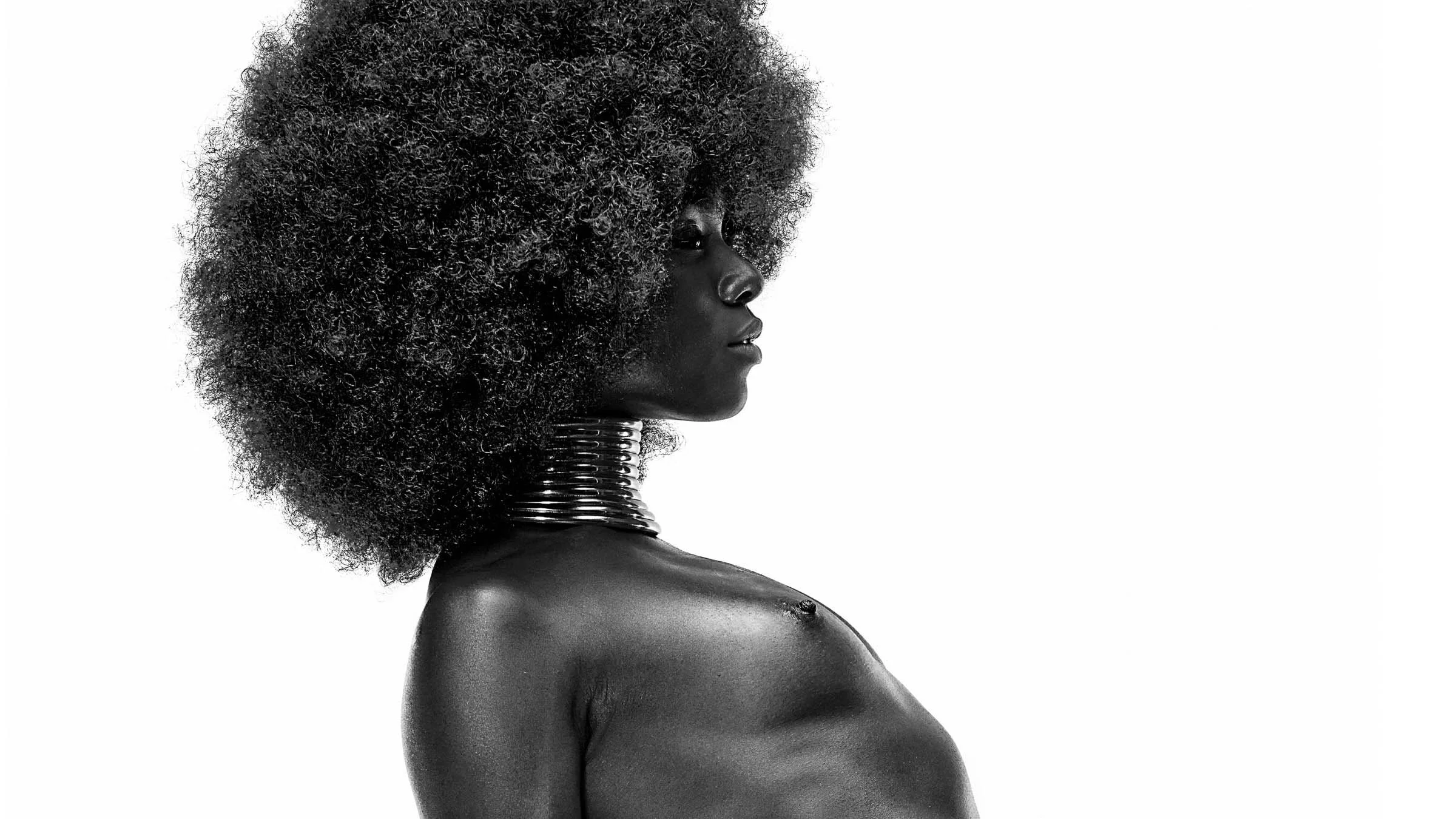STEFANO BRUNESCI

Stefano Brunesci’s way
by Stefano Brunesci
PH.: Stefano Brunesci
T.: Emanuele Cucuzza
Iconic and strong women, nude photography, hypocritical approach to sex and nudity, these are just a few of the subjects faced by this interview with a photographer, whose opinion expressed through social media is getting every day a wider audience.
What are your female icons of our days?
“Famous people I'd love to photograph include Kate Moss (of course!) as well as Karlie Kloss, Keira Knightley and indeed (despite her many detractors) even Miley Cyrus! All are strong, confident women who demand respect in their images and work. However, I also love the timelessness and depth of emotion in many vintage images of actresses as well. My first inspirations were the classic Hollywood portraits of Greta Garbo, Rita Hayworth and others by George Hurrell plus, naturally, some of the iconic B&W images of Marilyn Monroe.”
What are in particular your muses, those that you have already photographed?
“For myself, I've worked with lots of models, some of them many times, but I don't think I've ever really found one I would call a 'muse'... yet. Working a lot with a particular model can be great, but eventually it can become hard to find new things to shoot and of course it's better for my portfolio not to have too many images of the same model! The best models though do always bring something fresh at each shoot and it's interesting to work with somebody again after a gap of a couple of years to see what a little more life experience has added to their demeanour and depth of expression. Some of the best models I've worked with have been older, in their thirties rather than teenagers, and as long as they look after themselves I see no reason to shun older models at all. A young model will likely have more youthful energy but older models have more depth and gravitas which is something I really appreciate, especially as I prefer to portray women as strong and confident rather than passive and weak.”
The use of nude and provoking poses is often condemned for the negative light in which they cast women. What can reverse this trend?
“Actually, I disagree with the premise of this question as I don't believe that nudity or sexually provocative poses per-se are necessarily a negative thing at all. What is negative is the common practice of portraying women as weak, submissive creatures, whose only purpose is reproduction and the sexual gratification of men! There's nothing wrong with sex or a woman who enjoys sex, just as there's nothing inherently wrong with the nude human body or photographs of it. The problem lies in the fact that society objectifies and sexualizes women's bodies against their will and thereby reduces them to 'commodities of pleasure' rather than respecting them as the sole property of the women who inhabit them.
To reverse this trend we need more photography of women that portray them in ways they wish to be portrayed. The images need to speak to and about women and truly represent them rather than being merely 'eye candy' for men. And of course, we certainly shouldn't shy away from nudity because to do so simply reinforces the idea that the female body is somehow inherently sexual and a thing to be hidden away except for occasions when sexual gratification is required.”
“We need more photography of women that portray them in ways they wish to be portrayed.”
You prefer black and white and minimal post-production… what do you mostly focus your attention on? What makes you pick one photo over another?
“I'm a strong believer in the importance of creating (or sometimes just capturing) 'the moment' and of creating images with an immediate and almost subconscious impact. I generally find that B&W images, more so than colour, have the ability to pare things down to the absolute essence of what our consciousness perceives – i.e. form, balance, light and shade. The subtlest shift in the position of a head or the way an image is cropped can make a devastating difference to its strength and impact in the split second most of us give to glancing at a photo as it scrolls past our screen and of course these things are critical also when we look at it in more depth. If we want people to look at our images in the first place they have to grab the attention; but once that attention is grabbed the last thing we want to do is to disappoint with something that's actually, on closer inspection, mundane or run-of-the-mill. When I'm going through my images after a shoot - and I shoot a lot because I'm never satisfied with 'just OK' or 'this will do' images - I generally flick through them very fast, hardly looking at the details, selecting any that jump out at me and grab my attention in a split second. After that, I look at my selects more carefully for details (e.g. bad hand position, weird angle, poor shadows) that annoy me and may cause me to reject those images too.
I'm not so concerned (usually) with technical flaws such as missed focus, digital noise from high ISO or camera blur etc., as I strongly believe that these things have to be regarded as secondary to the actual image. Of course I do my best to avoid technical errors, but I've learned over the years that (for the kind of work I do) it's usually better to just 'shoot it and be damned' rather than to keep stopping and interrupting the mood and flow to fuss over technical stuff. At the end of the day, if an image moves me emotionally and conveys something of what I was trying to capture then I'll use it even if it has multiple technical flaws. As far as post production is concerned, I strongly believe in the saying "you can't polish a turd". If an image is weak then there's really nothing that can be done in Photoshop to 'save' it; all you can hope to do is make it smell a little better... That's why I generally try to stay in Lightroom wherever possible; I will use Photoshop for occasional 'fixes' to minor cosmetic things that would be hard or impossible to correct in Lightroom, but on the whole I light and shoot my images as if I were shooting on B&W film. I've had complaints from retouchers that my files have too much contrast but I really dislike the modern trend in photography towards lighting everything very flat and then trying to add shadows and even 'lighting' in Photoshop! That's not what photography is about - for me, anyway - and I don't regard images created in that manner as representative of what I aspire to as a photographer, regardless of how popular (or effective) they may be.”
“If we want people to look at our images in the first place they have to grab the attention.”
How do you use your photos or, rather, what is your market? Do you work for model agencies, magazines, books of freelance models…?
“I've been financially independent since 2007 when I retired from my other business activities and returned to photography full time. That's great for me as it means I don't have to worry about making money on a weekly or monthly basis from photography and it frees me up to shoot what inspires me and to concentrate on building a strong body of work. Of course I shoot for agencies sometimes and I submit stories to magazines too but the intent is always to make good images and build up my presence and visibility in the industry rather than to make a little money here or there from selling a photo or doing a paid portfolio shoot for a young model. I do occasionally give workshops which I enjoy a great deal, but again my motivation is not really financial.”
You make a massive use of social media; what are the plusses and minuses for your work?
“These days it's hard to make much progress without using social media to some extent. I find that sites like Facebook can be very useful for making contacts - that's how I first found Image In Progress for instance! - and for testing the water and finding what people like and what they don't. Of course that has the downside as well that it's sometimes tempting to try to 'please the crowd' rather than to do work that really inspires me. Luckily I often find that images which are more meaningful for me but which I expect to be less popular for one reason or another turn out to be pretty popular too, but it can be hard to avoid the temptation to play it safe and water things down a little. One of the things that I find most encouraging about social media is the number of women who seem to appreciate my work. Among the 18-35 age group about 60% of my Facebook followers are women and I put that down primarily to the fact that I'm committed to portraying women and their bodies - clothed or nude - in a positive and empowering manner. I'm a strong supporter of the #freethenipple movement and its campaign to end sexist censorship on social media as I feel that continued censorship of women's bodies only in this manner simply serves to prop up and support sexism, misogyny and rape culture, and that's the antithesis of what my images are about.”
Biography
Born in Yeovil, UK, Stefano Brunesci first began photographing women at the age of 13, inspired by the timeless portraits of Hollywood greats such as Rita Hayworth, Greta Garbo and Marilyn Monroe. After a short diversion into travel and landscape photography in his late teens Stefano returned to his first passion, editorial fashion, in 2007.
Although a convert to digital and a strong supporter of its benefits, Stefano, who now lives near Bath, UK, prefers to keep his use of postproduction to a minimum and often publishes entirely un-retouched work in the belief that passion and connection with the subject is the most important aspect of any photograph. As he says, "When you photograph a woman you're capturing a moment in her life and you can't fake that with any software."
STEFANO BRUNESCI’S WAY
Photographer: Stefano Brunesci
Model: Carolina Jaramillo
Stylist: Angelique Lancelle
Hair & Makeup Artist: Caroline Madison
Interviewer: Emanuele Cucuzza
Courtesy of Image in Progress magazine
If you like our Magazine and would like to support us, you can donate here:
It is very easy and secure. You will be forwarded to our PayPal page.
ALL YOU NEED
STAY UPDATED AND DON’T MISS OUR BEAUTIFUL ART
You can unsubscribe from our newsletter at any time.
By subscribing to the newsletter you accept our privacy policy.


